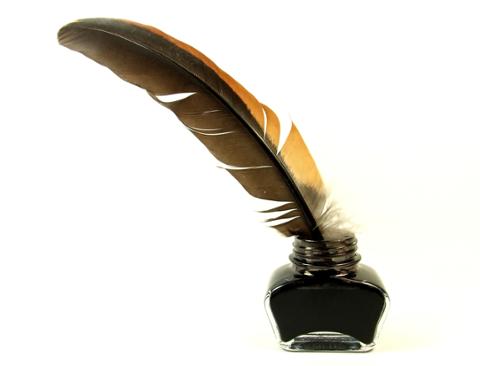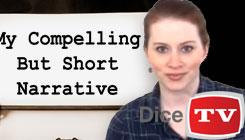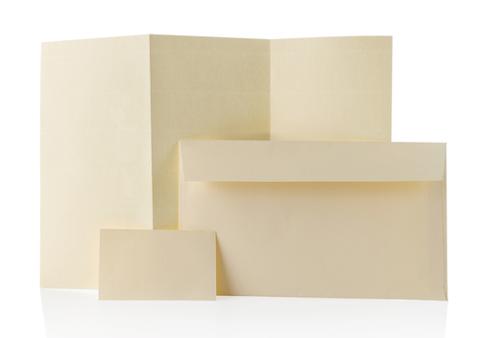
There’s no complicated secret to
writing a great cover letter: you need to make it as direct as possible. That doesn’t mean keeping your language simple (although that’s always a help); the best cover letters skip lengthy regurgitations of the candidate’s job history and preferences in favor of a straightforward message tailored to a specific employer. Here’s what to keep in mind, especially if you're competing for highly specialized roles (or at least roles that demand highly specialized skills, such as
machine learning):
Strong First Sentence
When they sit down to write their cover letter, many candidates forget that hiring managers and recruiters will only spend a few seconds scanning their materials before moving on. That means the cover letter’s first sentence must sell your abilities in the context of the company’s mission; there’s no time for a lengthy wind-up. Here’s an example of a solid first sentence: “I’m interested in the position of
senior iOS developer because I want to use my skills in developing apps to help [company] create the next generation of [company’s bestselling iOS app or game].” Quick and effective... and you get bonus points if you can squeeze in a technical term or two within that limited space (for instance, if you really are applying for a senior iOS developer gig, you might want to name-drop your
mastery of Swift).
No Templates
Hiring managers and recruiters will also trash any cover letter that comes off as too generic; they want signs that you’re interested in a specific company and team. A cover letter jammed with “boilerplate” material suggests (however rightly or wrongly) that the candidate is sending applications to every tech company that even vaguely matches their skillset. If you must use a template (and we’ve all been in that position; there are only so many hours in a day), make sure you re-write it extensively in your voice; the person reading your application is well-versed in all the popular templates currently on the market. Keep everything to a page. Have a proofreader (or three) who can scan your writing for any typos or errors, including any factual discrepancies between your cover letter and your résumé (for example,
make sure all your dates and job titles match up).
What Can You Do for Me?
The second and third paragraphs of your cover letter should continue the theme of your first sentence, highlighting how your mix of skills can benefit the company. Whenever you mention an achievement or goal from your previous jobs, explain how the experience makes you a great fit for the position on offer. While your personal development over the years is surely something to be proud of, prospective employers are most interested in what you can do for them. The last paragraph of your cover letter should end strongly, with a call to action that invites communication. “I’m available for an interview,” is a good example, “I will follow up on [date]. I look forward to hearing from you!”
Proofread, Proofread, Proofread
It bears mentioning again: proofread like your (future) job depends on it—because it will. And while you're at it,
don't forget to revamp your résumé.
 There’s no complicated secret to writing a great cover letter: you need to make it as direct as possible. That doesn’t mean keeping your language simple (although that’s always a help); the best cover letters skip lengthy regurgitations of the candidate’s job history and preferences in favor of a straightforward message tailored to a specific employer. Here’s what to keep in mind, especially if you're competing for highly specialized roles (or at least roles that demand highly specialized skills, such as machine learning):
There’s no complicated secret to writing a great cover letter: you need to make it as direct as possible. That doesn’t mean keeping your language simple (although that’s always a help); the best cover letters skip lengthy regurgitations of the candidate’s job history and preferences in favor of a straightforward message tailored to a specific employer. Here’s what to keep in mind, especially if you're competing for highly specialized roles (or at least roles that demand highly specialized skills, such as machine learning):
 There’s no complicated secret to writing a great cover letter: you need to make it as direct as possible. That doesn’t mean keeping your language simple (although that’s always a help); the best cover letters skip lengthy regurgitations of the candidate’s job history and preferences in favor of a straightforward message tailored to a specific employer. Here’s what to keep in mind, especially if you're competing for highly specialized roles (or at least roles that demand highly specialized skills, such as machine learning):
There’s no complicated secret to writing a great cover letter: you need to make it as direct as possible. That doesn’t mean keeping your language simple (although that’s always a help); the best cover letters skip lengthy regurgitations of the candidate’s job history and preferences in favor of a straightforward message tailored to a specific employer. Here’s what to keep in mind, especially if you're competing for highly specialized roles (or at least roles that demand highly specialized skills, such as machine learning):



